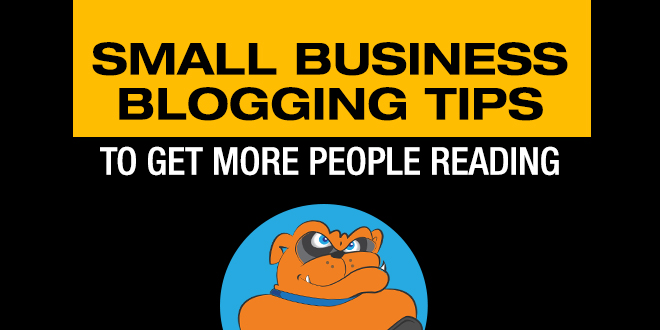You’ve done all the right things and your blog post that is targeting a specific keyword is now appearing on page one of Google but you can’t seem to convert the traffic from blog browsers to blog readers; you can’t get the engagement. If that’s where you are at your blog title or headline may be the problem (that’s small business blogging tip #1).
Successful Small Business Blogs Focus On Headlines & Subheadlines
There are many gurus who make a big deal on how people don’t “read” content on the internet the way they read print material. They stress the importance of titles, headlines and subheads because when people “read” the internet they are actually scanning the entire page not reading it.
Newsflash…people have been doing that since Gutenberg invented the printing press.
When you read a newspaper you scan the headlines before selecting content. When you see the cover of a magazine you check out the titles or taglines of the features inside before you decide to buy. There’s nothing magic about the internet. Strong, engaging titles or headlines are the key to getting a piece of content read.
And writing strong headlines, particularly when you have to use a keyword in the title ain’t easy.
But it can be done and that’s the purpose of this post. We’ll give you 5 tips on best practices to grab the browser’s interest and convert him or her into a reader. These tips are based on actual CTR rates for thousands of blog posts and email subject lines (also known as titles).
Do You Know What Titles Work Best?
The key to any successful title or headline is to make an emotional connection with the viewer. It doesn’t matter if they are looking for a best price, how to, answer this question or any of a thousand other search types at the end of the day the searcher is looking for content that will satisfy the base need of “what’s in it for me (WIIFM).”
There are several ways to make that connection but some work better than others and here they are:
1. Ask a question. When your title asks a question the reader’s brain will either consciously or unconsciously try to answer it. That process can take less than a second but almost invariably the reader will click through to see if they answered right. If they don’t know the answer, and the question is relevant to their search, they are likely to click through to get the answer.
2. Use Unique adjectives. In the title of this blog we used the adjective “voracious.” We could have used active, actual, interested or one of a host of other adjectives that would have been appropriate. But voracious is not a common word and it conjures up a stronger mental image that say “active.” Don’t be afraid to use a thesaurus to find adjectives that excite.
3. Focus on the reader not you. Some authority sites will use their reputation to grab readers with titles like “5 News Stories about Derivatives That Made Us sit Up and Take Notice.” Now if you are a respected business and financial publication like Forbes that’s a great title. But if you aren’t, and you are looking for new readers use “5 News Stories about Derivatives That You Must Read Now.” Remember you have to appeal to the WIIFM connection. If you are talking about yourself you miss the opportunity. If you’re not sure on what to do, you can get help from small business blogging experts.
4. Use Numbers. People love numbers and they love lists. Numbers also give an indication about how long the content is going to be. Odd numbers work better than even numbers with the exception of numbers that are divisible by 10 i.e. 50, 100, 500 etc.
5. Use a Fun Tone. Even posts that deal with technical or business topics will have a higher CTR (click through rate) if the headline uses a lighter tone. A “fun tone” suggests that the content will be interesting and easy to consume. When was the last time you saw the instructions for a product on the New York Time Best Seller list. Dry, just the facts content may get the job done but there’s a better way.
So there you have it, 5 key small business blogging tips to help you generate more engagement. If you’re not yet blogging we highly suggest you get started with your blogging plan. Google needs and wants to see that your business is actively contributing to the Internet.
Want to embed this infographic on your website?


